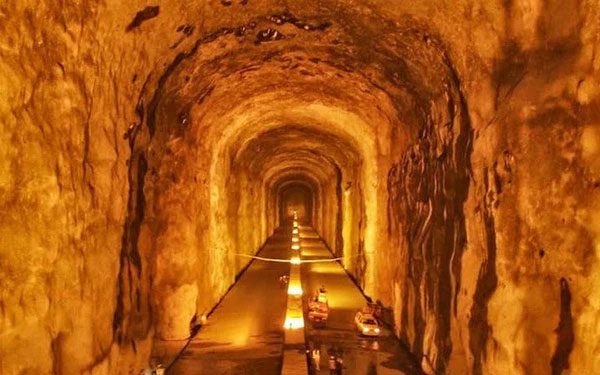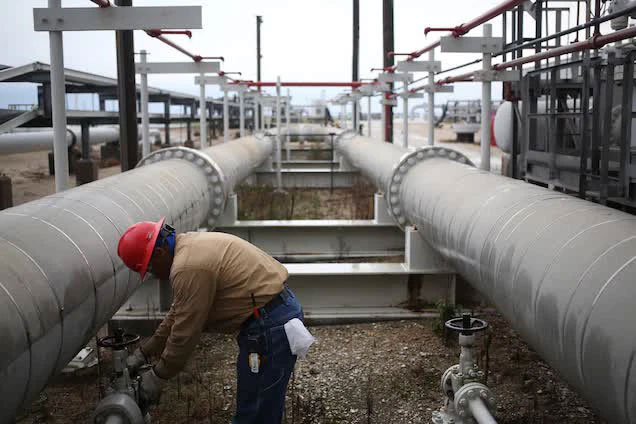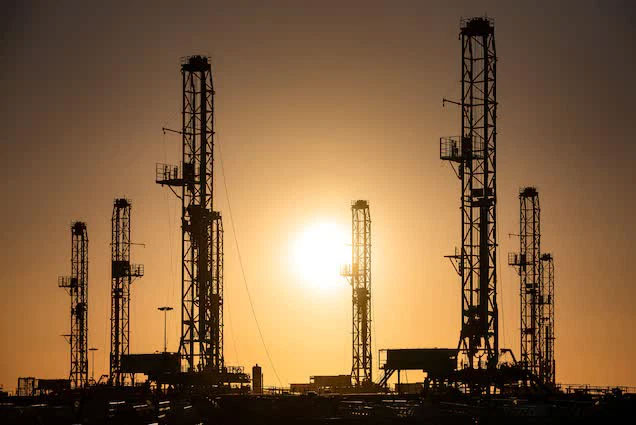Driven by a crippling oil embargo in the 1970s, the United States created the largest oil reserve in the world. However, in a world shifting towards renewable energy to combat climate change, its future has become uncertain…
The U.S. Oil Embargo…
By the end of November 1973, the world was just beginning to feel the repercussions of the Yom Kippur War, a conflict between Israel and neighboring countries Egypt and Syria.

This is the largest emergency crude oil reserve in the world.
To punish the U.S. and other Western nations for supporting Israel during the war, the Organization of Arab Petroleum Exporting Countries (OAPEC), led by Saudi Arabia, declared a oil embargo (cutting off oil supply) – causing the average price of imported crude oil to triple globally.
By November 25 of that year, the crisis had escalated to the point where then-President Richard Nixon had to address the nation, urging citizens to lower their thermostats, limit driving on Sundays, and decorate Christmas lights sparingly.
In the years that followed, the U.S. pursued an energy independence policy to protect itself from such crises in the future. One of the initiatives of this new policy was the establishment of the Strategic Petroleum Reserve (SPR) – a reserve of crude oil that the U.S. could tap into in emergencies.
How Much Oil is in the Strategic Petroleum Reserve?
The Strategic Petroleum Reserve (SPR), the largest emergency crude oil reserve in the world, has played a role in U.S. energy policy for over 40 years, according to a report from the U.S. Congress.

The Strategic Petroleum Reserve was established to protect the U.S. from serious disruptions to global oil supply. The SPR is divided into four locations along the Gulf Coast of Texas and Louisiana — including the Bryan Mound facility in Freeport, Texas — with a capacity of up to 727 million barrels of crude oil. (Photo: LUKE SHARRETT, BLOOMBERG, GETTY IMAGES)
This reserve is divided into four sites along the Gulf Coast of Louisiana and Texas. These locations were chosen for their proximity to maritime ports and the pipelines necessary for transporting oil.
Oil is stored deep underground, in caverns carved out of salt domes, which are considered the safest method of oil storage for the environment due to their low permeability.
The largest amount of oil ever held in the reserve – and most of its current facilities can hold – is 727 million barrels as of December 2009. This reserve allows the nation to respond to shortages and attempts to prevent them.
Most recently, the U.S. announced it would release 30 million barrels of crude oil for energy companies after Russia, one of the world’s top oil producers, launched a military campaign in Ukraine in late February 2022. In coordination with other world powers, this release of crude oil aimed to stabilize the volatile oil market and ultimately reduce soaring gasoline prices amid concerns over shortages.
However, many environmental advocates argue that relying on the Strategic Petroleum Reserve to manage crude oil shortages is merely a stopgap measure. They assert that in the context of the escalating climate crisis, the U.S. should end its dependence on fossil fuels and shift towards green energy sources.
Although the U.S. Congress initially mandated in 1975 that the Strategic Petroleum Reserve could hold up to 1 billion barrels, that capacity has never been reached.
For many years, the U.S. has been required to maintain a certain level of oil in its Strategic Petroleum Reserve — equivalent to 90 days of net imports — to meet its obligations to the International Energy Agency (IEA) – established in 1974 to respond to the OAPEC oil embargo, the IEA coordinates global oil releases among 31 member countries in emergencies.

The sun rises over oil rigs being stored on February 6, 2021, in Odessa, Texas. In the 1970s, the U.S. sought energy independence by investing in the oil industry. (Photo: ELI HARTMAN via AP)
The IEA has been criticized for systematically underestimating the role of renewable energy sources in future energy systems like photovoltaics.
However, the U.S. has not been required to meet oil reserve requirements since 2020, when it began exporting more oil than it imported. This development has been largely due to the rise of fracking – the high-pressure injection of water, chemicals, and sand into shale formations to release trapped gas and oil.
How Does the Strategic Petroleum Reserve Work?
The Strategic Petroleum Reserve was originally created for emergencies – used in the context of severe global oil supply disruptions following the oil crisis of 1973.
To date, the U.S. has only ordered emergency releases from the reserve three times: In 1991, when war broke out in the Persian Gulf during Operation Desert Storm, the U.S. released 17.2 million barrels of oil. In 2005, when Hurricane Katrina devastated oil production along the Gulf Coast, 20.8 million barrels were released. And in 2011, the U.S. and the IEA jointly released 60 million barrels of oil when the civil war in Libya disrupted oil supplies.
However, global emergencies are not the only reason the U.S. deploys its oil reserves. Additionally, the U.S. regularly conducts sales to private companies from the Strategic Petroleum Reserve to test readiness or increase revenue; and the country can also use the reserve oil to help private companies recover from smaller-scale disasters, such as severe weather or shipping channel closures.
For example, after Hurricane Harvey in 2017, the U.S. loaned 5.2 million barrels of oil to Gulf Coast refineries to keep them operational. Known as exchanges, these agreements require the private company to return the oil they borrowed, plus interest.
The Future of the Strategic Petroleum Reserve
The role of the Strategic Petroleum Reserve may continue to evolve in the coming years. Scott L. Montgomery, a lecturer at the University of Washington, writes that the Strategic Petroleum Reserve “has entered a new era” as the U.S. is now a net exporter of crude oil.
As global efforts to reduce carbon emissions slow demand for oil, he notes that it is unclear how much the U.S. will need emergency oil supplies.
However, the U.S. is not expected to be a net exporter forever, and supporters of the Strategic Petroleum Reserve argue that it is valuable to maintain an oil reserve to help navigate everything from high oil prices to wars and global instability.
As the world faces the brink of an energy crisis, they argue that it may be needed more than ever.
Nonetheless, environmental activists argue that the volatility of the global oil market is precisely why the U.S. should reduce its reliance on the Strategic Petroleum Reserve.
The reason is: The U.S. consumes about 20 million barrels of crude oil each day – meaning the SPR could only last about a month if the U.S. were cut off from all other oil sources. Instead of continuing to stockpile oil, environmental activists argue that the U.S. should invest in electric cars and buses as well as other clean energy initiatives.


















































